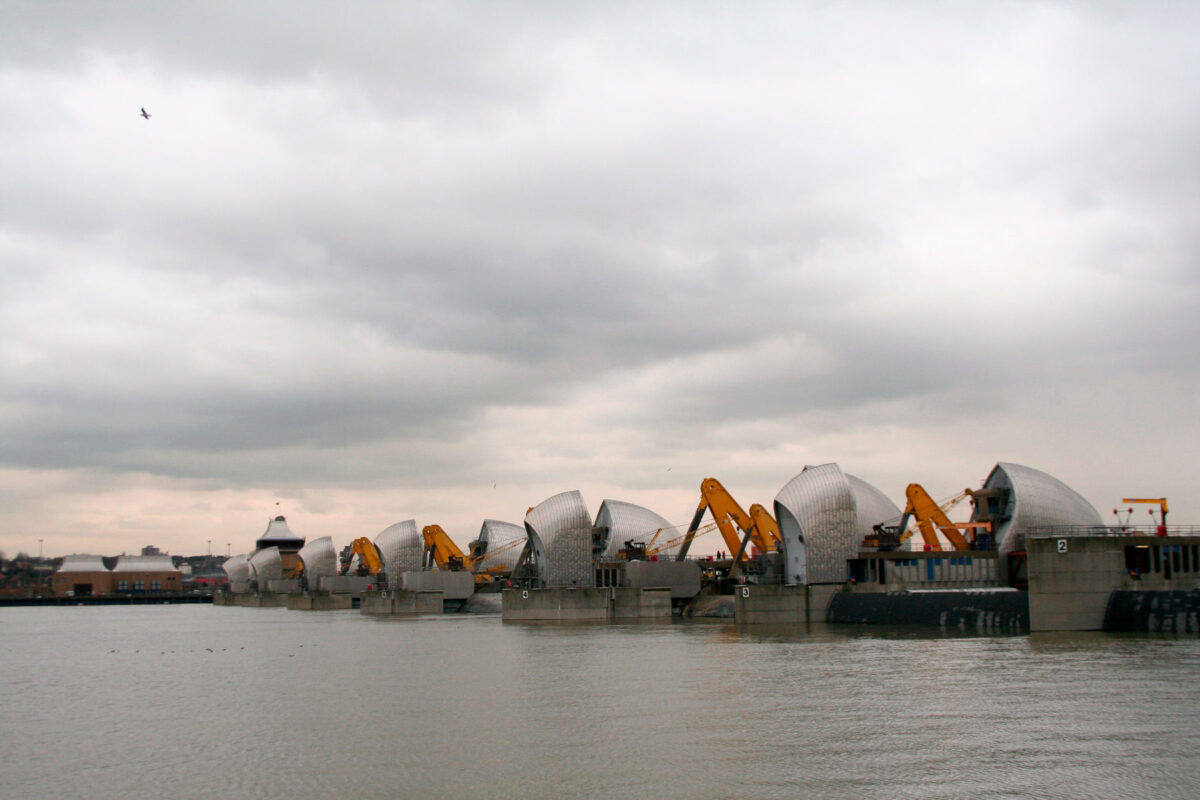Have you ever heard about the incredible Thames Barrier in London? Picture it as a guardian, shielding the city from powerful tides and floods. Let’s unravel the story of this awe-inspiring structure and understand why it’s such a crucial part of London’s landscape!
A Barrier Against Nature’s Forces: Envision a colossal gate emerging in the River Thames to thwart mighty tides – that’s the Thames Barrier! This structure, completed in 1984, plays the role of a formidable protector, ensuring London remains unharmed by storm surges and high waters.
- spans 520 metres across the River Thames near Woolwich
- protects 125 square kilometres of central London from flooding caused by tidal surges
It has 10 steel gates that can be raised into position across the River Thames. When raised, the main gates stand as high as a 5 storey building and as wide as the opening of Tower Bridge. Each main gate weighs 3,300 tonnes.
Historical Significance: To truly grasp the essence of the Thames Barrier, let’s journey back to 1953. A severe North Sea flood prompted a realization of London’s vulnerability to tidal surges. In response, the barrier was conceived, a proactive measure to prevent a recurrence and safeguard the city’s low-lying areas.

Architectural Grandeur: The Thames Barrier’s design seamlessly blends functionality with aesthetic appeal. Ten impressive gates, each spanning 61 meters, showcase the engineering brilliance behind this structure. It’s not merely a utilitarian masterpiece; it stands as a symbol of London’s resilience against the forces of nature.
Interactive Exploration: For those intrigued by engineering projects, a visit to the Thames Barrier Information Centre is a must. Nestled on the riverbanks, the center offers a fascinating journey through the barrier’s history via interactive exhibits, educational displays, and panoramic views. Delve into the science behind its operation and appreciate the meticulous planning that went into its creation.
Environmental Impact: Beyond its primary role, the Thames Barrier has had a positive ecological impact. The structure has created intertidal habitats, fostering wildlife along the riverbanks. The surrounding Thames Barrier Park, with its landscaped gardens and recreational spaces, enhances the ecological footprint of this engineering wonder.
The Thames Barrier has been closed 209 times since it became operational in 1982 – correct as at 1 November 2023. Of these closures:
- 118 were to protect against tidal flooding
- 91 were to protect against combined tidal/fluvial flooding
More than a structural masterpiece, it symbolizes the city’s adaptability and innovation in the face of natural challenges. A visit to the Thames Barrier is not just an exploration of history and engineering; it’s a tribute to human resilience and the enduring spirit of London, a story meant to be shared with people of all cultures and backgrounds.

The future of the Thames Barrier: The Thames Estuary 2100 plan sets out how flood risk will be managed in the Thames estuary to the end of the century and beyond. It also recommends what actions the Environment Agency and others will need to take in the:
- short term (the next 25 years)
- medium term (the following 15 years)
- long term (to the end of the century)
The plan is based on current guidance on climate change, but is adaptable to changes in predictions for sea level rise and climate change over the century.
The Thames Barrier Information Centre is open to the public every Saturday from 1st April 2023 to 28th October 2023 from 10:30 to 15:30hrs.
Tickets prices:
Adult – £5.50
Senior/Student: £5.00
Child: £4.30 – Child under 5 years old is free.



Leave a Reply